Ground/work
June 25, 2020 – October 17, 2021
Clark Art Institute
Installation view of Ground/work, Clark Art Institute, Massachussets, USA, 2020
Photo: Thomas Clark, courtesy of the Clark Art Institute
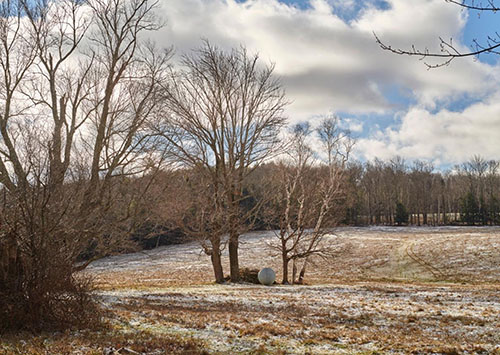

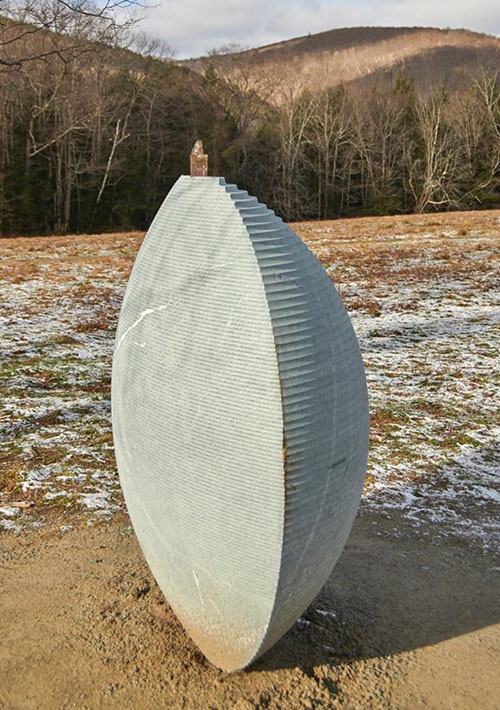
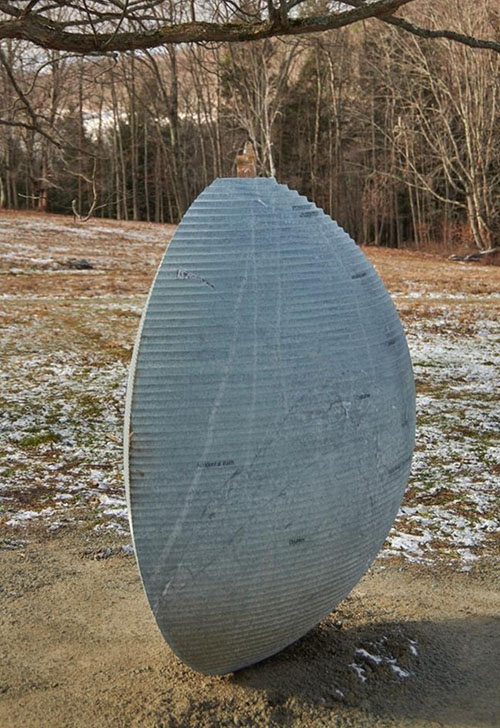
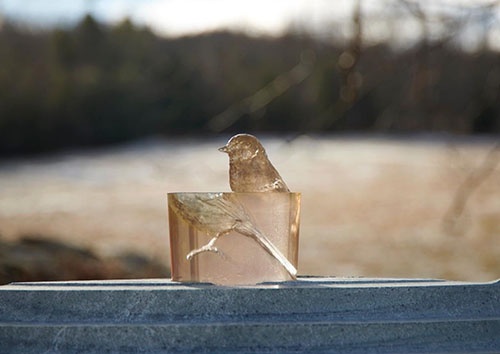

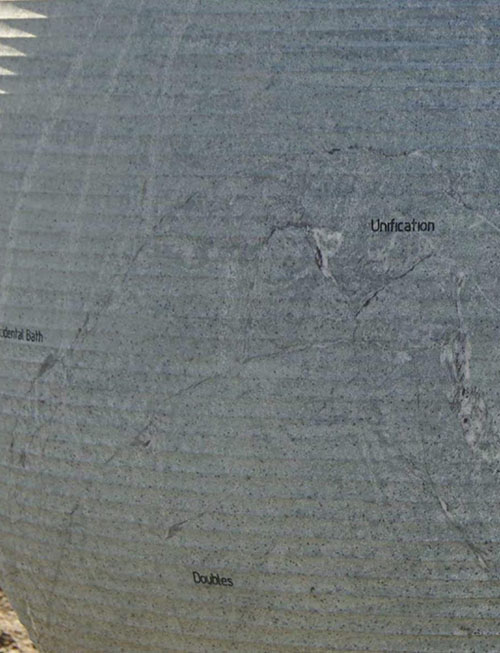
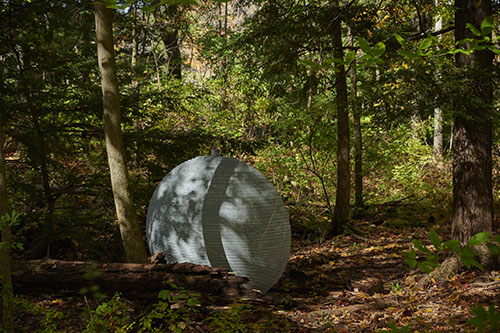
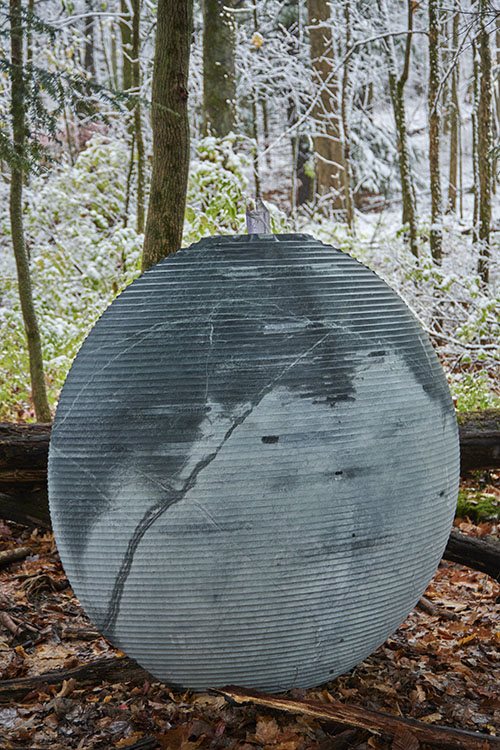

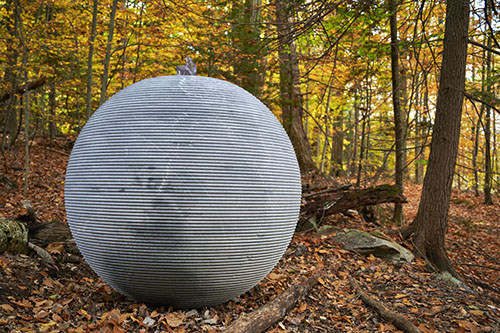

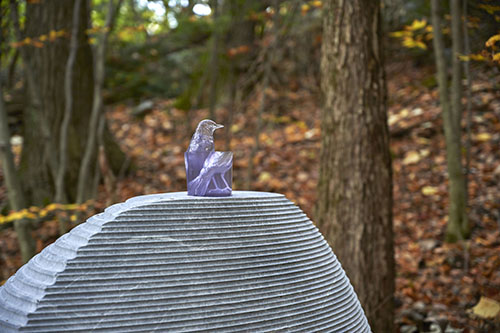
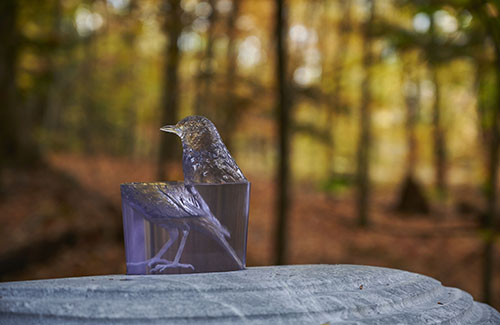
In April 2018 the leaders of North and South Korea met in the demilitarized zone (DMZ), a lush and biodiverse area located between the two countries with no human inhabitants. At one point during this historic meeting, the leaders requested to speak in private apart from the thousands of journalists who had gathered to report on the event. Despite attempts by members of the press to record their conversation, only birdsong and the click of cameras were audible. In Haegue Yang’s three-part project, Migratory DMZ Birds on Asymmetric Lens, three bird species native to the DMZ and heard on the recording travel to the unfamiliar setting of New England. Made of 3D-printed resin set atop robotically milled stone pedestals, these sculptures combine synthetic and natural materials and demonstrate the artist’s interest in new technologies of production. Yang crafts an encounter with nature, collapsing the boundaries between time and place, the familiar and the unknown, isolation and separation, and the pre-supposed existing differences between people and things. Dispersed in the landscape, these three sculptures, in the artist’s words, “scatter the narrative,” encouraging visitors to wander in the landscape and discover each example in a different environmental context. In Yang’s assessment, the natural world is ignorant and indifferent to civilizational history. Therefore, Yang imagines these three birds, unburdened by the borders and limitations that human society imposes, making their way to the North East of the United States in a kind of avian diaspora to settle on Stone Hill amongst their local counterparts.
Found throughout Asia, Europe, the Middle East and Africa, the Great Tit is most commonly found in open deciduous woodland, mixed forests, parks, gardens, and hedges in farmland. Its plumage is distinctive: white cheeks framed by a black cap and bib with yellow underparts. The Great Tit has a strong call and has never before been spotted in North America.
The Japanese Bush Warbler is drab-colored and secretive, tending to remain deep in the shadow of foliage during daytime hours. In summer, the bird makes its habitat in the low hills and high mountains; in winter, it seeks cover at lower elevations. Sometimes it sings in the open. The Japanese Bush Warbler has a rich, varied, and liquid sound; it typically resides in Japan, China, Korea, the Philippines, and Hawaii.
The Gray-Backed Thrush has a beautiful, melodious sound. Preferring temperate forest habitats, the bird typically resides in China, Russia, Vietnam, Korea, Taiwan, Hong Kong, and Japan. Often spotted foraging loudly in the undergrowth singly or in pairs, the Gray-Backed Thrush has a bright orange belly and dark streaking on the throat and chest.
Exhibited Works
Migratory DMZ Birds on Asymmetric Lens, 2020-2021
back to alphabetical order |
back to chronological order |